Ageusia sebagai kondisi pasca Long COVID-19; bagaimana manajemennya?: laporan kasus
Abstract
Ageusia as a Long Covid-19 condition; how is the management?: a case report
Introduction: Long Covid is a long-term symptom that can be experienced after a COVID-19 infection. This condition can affect a person's ability to perform daily activities. One of the most common symptoms of this condition is ageusia. This article explains the management of prolonged ageusia as a condition after experiencing a COVID-19 infection. Case report: A 28-year-old woman complained of loss of taste on her tongue 8 months ago when she was diagnosed with COVID-19. Clinical examination did not find intraoral abnormalities, but depapillation of the tongue was observed. A taste function examination was conducted, the results showed that the patient could not taste sweet, salty, sour, or bitter flavors, but could still perceive the sensations of heat and cold. Management in this case involved oral hygiene education, including instructions to avoid spicy and hot foods; stimulation of the taste buds through consumption of warm spice mixtures (such as ginger, cinnamon, cloves, lemon grass) and caffeine; administration of multivitamins, zinc, prednisone; and rinsing with chlorine dioxide-zinc mouthwash. Evaluation was conducted monthly, the patient showed positive changes at each visit. The sense of taste gradually returned. Conclusion: Management of ageusia as a Long Covid-19 condition requires comprehensive treatment, including various multivitamins, minerals, corticosteroids, mouthwash, and taste-stimulating exercises.
Keywords
Full Text:
PDFReferences
Neta FI, Fernandes ACL, Vale AJM, Pinheiro FI, Cobucci RN, Azevedo EP de, et al. Pathophysiology and possible treatments for olfactory-gustatory disorders in patients affected by COVID-19. Current Research in Pharmacology and Drug Discovery. 2021;2:100035. https://doi.org/10.1016/j.crphar.2021.100035
Chabot AB, Huntwork MP. Turmeric as a Possible Treatment for COVID-19-Induced Anosmia and Ageusia. Cureus. 2021;13(9):9-11. https://doi.org/10.7759/cureus.17829
Mastrangelo A, Bonato M, Cinque P. Smell and taste disorders in COVID-19: From pathogenesis to clinical features and outcomes. Neurosci Lett. 2021;748:135694. https://doi.org/10.1016/j.neulet.2021.135694
Trachootham D, Thongyen S, Lam-Ubol A, Chotechuang N, Pongpirul W, Prasith Sirikul W. Simultaneously complete but not partial taste and smell losses were associated with SARS-CoV-2 infection. Inter J Infectious Diseases. 2021;106:329-37. https://doi.org/10.1016/j.ijid.2021.03.083
Patel A, Charani E, Ariyanayagam D, Abdulaal A, Denny SJ, Mughal N, et al. New-onset anosmia and ageusia in adult patients diagnosed with SARS-CoV-2 infection. Clinic Microbiol Infection. 2020;26(9):1236-41. https://doi.org/10.1016/j.cmi.2020.05.026
Sudre CH, Keshet A, Graham MS, Joshi AD, Shilo S, Rossman H, et al. Anosmia, ageusia, and other COVID-19-like symptoms in association with a positive SARS-CoV-2 test, across six national digital surveillance platforms: an observational study. Lancet Digit Health. 2021;3(9):e577-86. https://doi.org/10.1016/S2589-7500(21)00115-1
Yom-Tov E, Lekkas D, Jacobson NC. Association of COVID19-induced anosmia and ageusia with depression and suicidal ideation. J Affect Disord Rep. 2021;5(April):100156. https://doi.org/10.1016/j.jadr.2021.100156
Lima MA, Silva MTT, Oliveira R V., Soares CN, Takano CL, Azevedo AE, et al. Smell dysfunction in COVID-19 patients: More than a yes-no question. J Neurol Sci. 2020;418:117107. https://doi.org/10.1016/j.jns.2020.117107
Vaira LA, Salzano G, Deiana G, De Riu G. Anosmia and Ageusia: Common Findings in COVID-19 Patients. Laryngoscope. 2020;130(7):1787. https://doi.org/10.1002/lary.28692
Algahtani SN, Alzarroug AF, Alghamdi HK, Algahtani HK, Alsywina NB, Bin Abdulrahman KA. Investigation on the Factors Associated with the Persistence of Anosmia and Ageusia in Saudi COVID-19 Patients. Int J Environ Res Public Health. 2022;19(3). https://doi.org/10.3390/ijerph19031047
Carod-Artal FJ, García-Moncó JC. Epidemiology, pathophysiology, and classification of the neurological symptoms of post-COVID-19 syndrome. Neurology Perspectives. 2021;1:S5-15. https://doi.org/10.1016/j.neurop.2021.07.005
Augustin M, Schommers P, Stecher M, Dewald F, Gieselmann L, Gruell H, et al. Post-COVID syndrome in non-hospitalised patients with COVID-19: a longitudinal prospective cohort study. Lancet Reg Health Europe. 2021;6:1-8. https://doi.org/10.1016/j.lanepe.2021.100122
López-Sampalo A, Bernal-López MR, Gómez-Huelgas R. Persistent COVID-19 syndrome. A narrative review. Revista Clínica Española (English Edition). 2022;222(4):241-50. https://doi.org/10.1016/j.rceng.2021.10.001
Faycal A, Ndoadoumgue AL, Sellem B, Blanc C, Dudoit Y, Schneider L, et al. Prevalence and factors associated with symptom persistence: A prospective study of 429 mild COVID-19 outpatients. Infect Dis Now. 2022;52(2):75-81. https://doi.org/10.1016/j.idnow.2021.11.003
Thomas DC, Chablani D, Parekh S, Pichammal RC, Shanmugasundaram K, Pitchumani PK. Dysgeusia: A review in the context of COVID-19. J American Dent Associat. 2022;153(3):251-64. https://doi.org/10.1016/j.adaj.2021.08.009
Riestra-Ayora J, Yanes-Diaz J, Esteban-Sanchez J, Vaduva C, Molina-Quiros C, Larran-Jimenez A, et al. Long-term follow-up of olfactory and gustatory dysfunction in COVID-19: 6 months case-control study of health workers. European Archiv Oto-Rhino-Laryngology. 2021;278(12):4831-7. https://doi.org/10.1007/s00405-021-06764-y
Speth MM, Singer-Cornelius T, Oberle M, Gengler I, Brockmeier SJ, Sedaghat AR. Olfactory Dysfunction and Sinonasal Symptomatology in COVID-19: Prevalence, Severity, Timing, and Associated Characteristics. Otolaryngology - Head and Neck Surgery (United States). 2020;163(1):114-20. https://doi.org/10.1177/0194599820929185
Mahmood MM. Applied successful treatment of two main post-COVID-19 symptoms: anosmia and ageusia: A novel approach. J Inter Medic Emerg Res. 2021;2(2). https://doi.org/10.37191/Mapsci-2582-7367-2(2)-023
Hosseini A, Mirmahdi E, Moghaddam MA. A new strategy for treatment of Anosmia and Ageusia in COVID-19 patients. Integrative Respiratory Medicine. 2020;1(2). https://doi.org/10.1051/irm/2020003
Oliveira WQ de, Sousa PHM De, Pastore GM. Olfactory and gustatory disorders caused by COVID-19: How to regain the pleasure of eating? Trends Food Sci Technol. 2022;122:104-9. https://doi.org/10.1016/j.tifs.2022.01.022
Koyama S, Kondo K, Ueha R, Kashiwadani H, Heinbockel T. Possible use of phytochemicals for recovery from COVID-19-induced anosmia and ageusia. Int J Mol Sci. 2021;22(16). https://doi.org/10.3390/ijms22168912
Salzano G, Maglitto F, Vaira LA, Salzano FA, De Riu G. Ageusia, A Highly Specific Symptom of COVID-19, for Which an Unaware Patient May Seek Dental Assistance. Int Dent J. 2021;71(2):85-6. https://doi.org/10.1111/idj.12620
Santos REA, da Silva MG, do Monte Silva MCB, Barbosa DAM, Gomes AL do V, Galindo LCM, et al. Onset and duration of symptoms of loss of smell/taste in patients with COVID-19: A systematic review. Am J Otolaryngology - Head and Neck Medicine and Surgery. 2021;42(2). https://doi.org/10.1016/j.amjoto.2020.102889
Addison AB, Wong B, Ahmed T, Macchi A, Konstantinidis I, Huart C, et al. Clinical Olfactory Working Group consensus statement on the treatment of postinfectious olfactory dysfunction. J Allergy Clinic Immunol. 2021;147(5):1704-19. https://doi.org/10.1016/j.jaci.2020.12.641
Baki A. Efek Vitamin A pada Hidung Kering. J Bedah THT Kepala dan Leher. 2021. http://dx.doi.org/10.24966/OHNS-010X/100065
Markun S, Gravestock I, Jäger L, Rosemann T, Pichierri G, Burgstaller JM. Effects of vitamin b12 supplementation on cognitive function, depressive symptoms, and fatigue: A systematic review, meta-analysis, and meta-regression. Nutrients. MDPI AG; 2021;13:1-18. https://doi.org/10.3390/nu13030923
Carr AC, Maggini S. Vitamin C and immune function. Nutrients. MDPI AG; 2017;9(11). https://doi.org/10.3390/nu9111211
Lee GY, Han SN. The role of vitamin E in immunity. Nutrients. MDPI AG; 2018;10(11):1614. https://doi.org/10.3390/nu10111614
Sabico S, Enani MA, Sheshah E, Aljohani NJ, Aldisi DA, Alotaibi NH, et al. Effects of a 2-week 5000 iu versus 1000 iu vitamin d3 supplementation on recovery of symptoms in patients with mild to moderate covid-19: A randomized clinical trial. Nutrients. 2021;13(7). https://doi.org/10.3390/nu13072170
Antwi J, Appiah B, Oluwakuse B, Abu BAZ. The Nutrition-COVID-19 Interplay: a Review. Current Nutrition Reports. Springer; 2021;10:364-74. https://doi.org/10.1007/s13668-021-00380-2
Santos HO. Therapeutic supplementation with zinc in the management of COVID-19-related diarrhea and ageusia/dysgeusia: Mechanisms and clues for a personalized dosage regimen. Nutr Rev. 2022;80(5):1086-93. https://doi.org/10.1093/nutrit/nuab054
Heckmann SM, Hujoel P, Habiger S, Friess W, Wichmann M, Heckmann JG, et al. Zinc gluconate in the treatment of dysgeusia - A randomized clinical trial. J Dent Res. 2005;84(1):35-8. https://doi.org/10.1177/154405910508400105
Khani E, Khiali S, Beheshtirouy S, Entezari-maleki T. Since January 2020 Elsevier has created a COVID-19 resource centre with free information in English and Mandarin on the novel coronavirus COVID- 19. The COVID-19 resource centre is hosted on Elsevier Connect, the company' s public news and information. 2020. https://doi.org/10.1016/j.ejphar.2021.174582
Hatanaka N, Xu B, Yasugi M, Morino H, Tagishi H, Miura T, et al. Chlorine dioxode is a more potent antiviral agent against SARS-CoV 2 than sodium hypochlorite. Elsevier. 2021;2-5. https://doi.org/10.1016/j.jhin.2021.09.006
Shimabukuro PMS, Duarte ML, Imoto AM, Atallah ÁN, Franco ESB, Peccin MS, et al. Environmental cleaning to prevent COVID-19 infection. A rapid systematic review. Sao Paulo Med J 2020;138(6):505-14. https://doi.org/10.1590/1516-3180.2020.0417.09092020
DOI: https://doi.org/10.24198/jkg.v36i3.49634
Refbacks
- There are currently no refbacks.
Copyright (c) 2025 Jurnal Kedokteran Gigi Universitas Padjadjaran
INDEXING & PARTNERSHIP

Jurnal Kedokteran Gigi Universitas Padjadjaran dilisensikan di bawah Creative Commons Attribution 4.0 International License

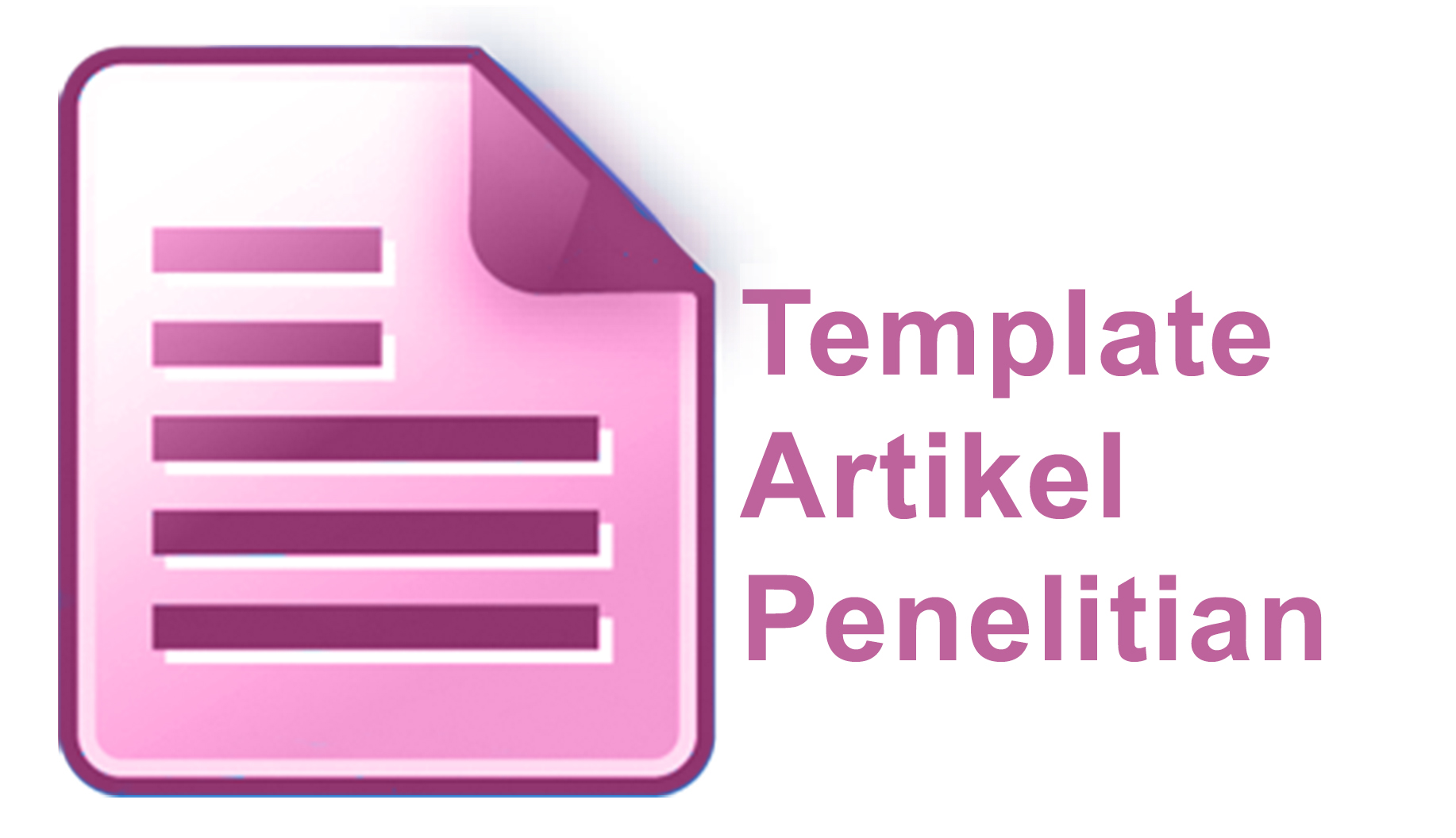
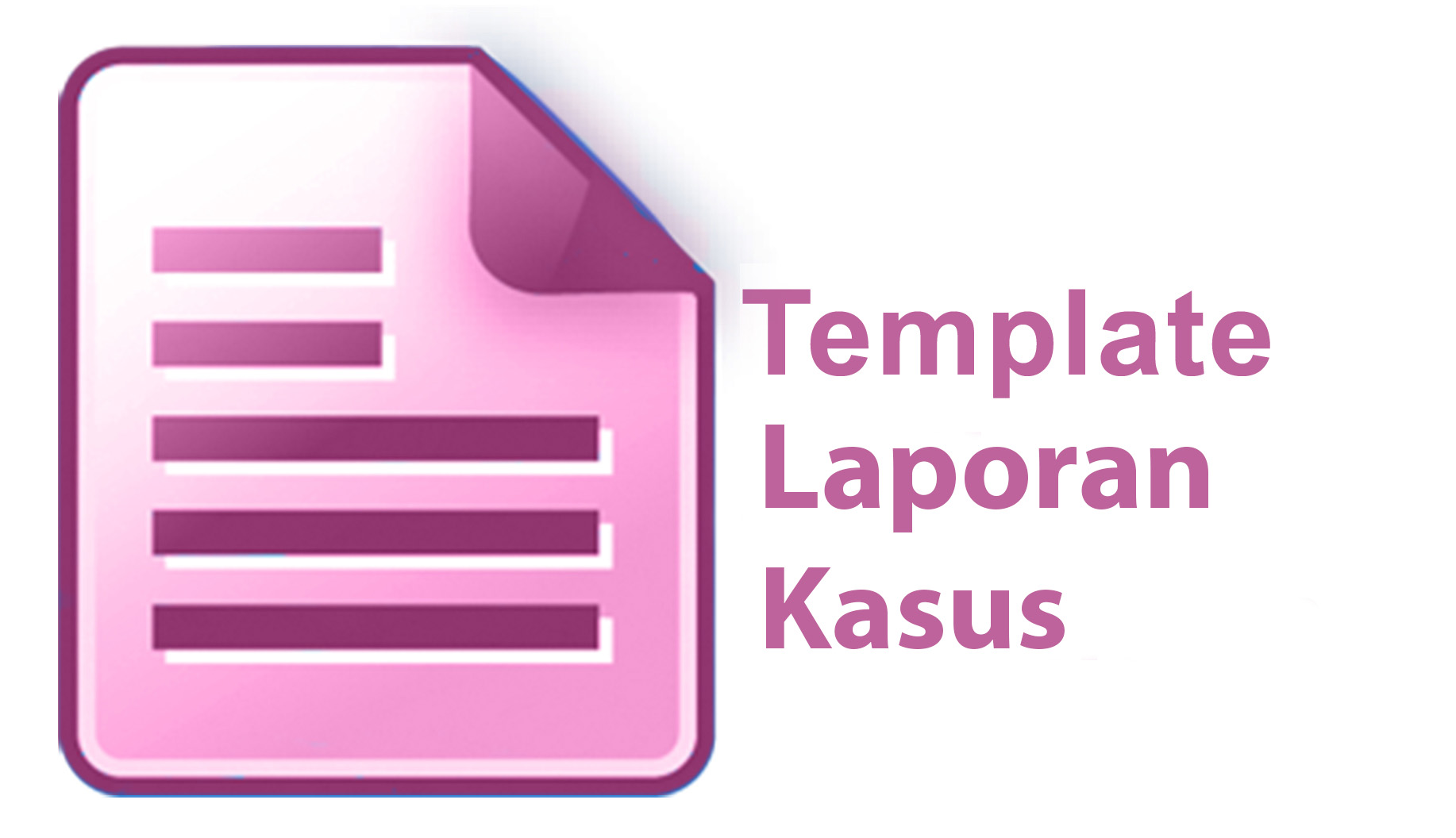
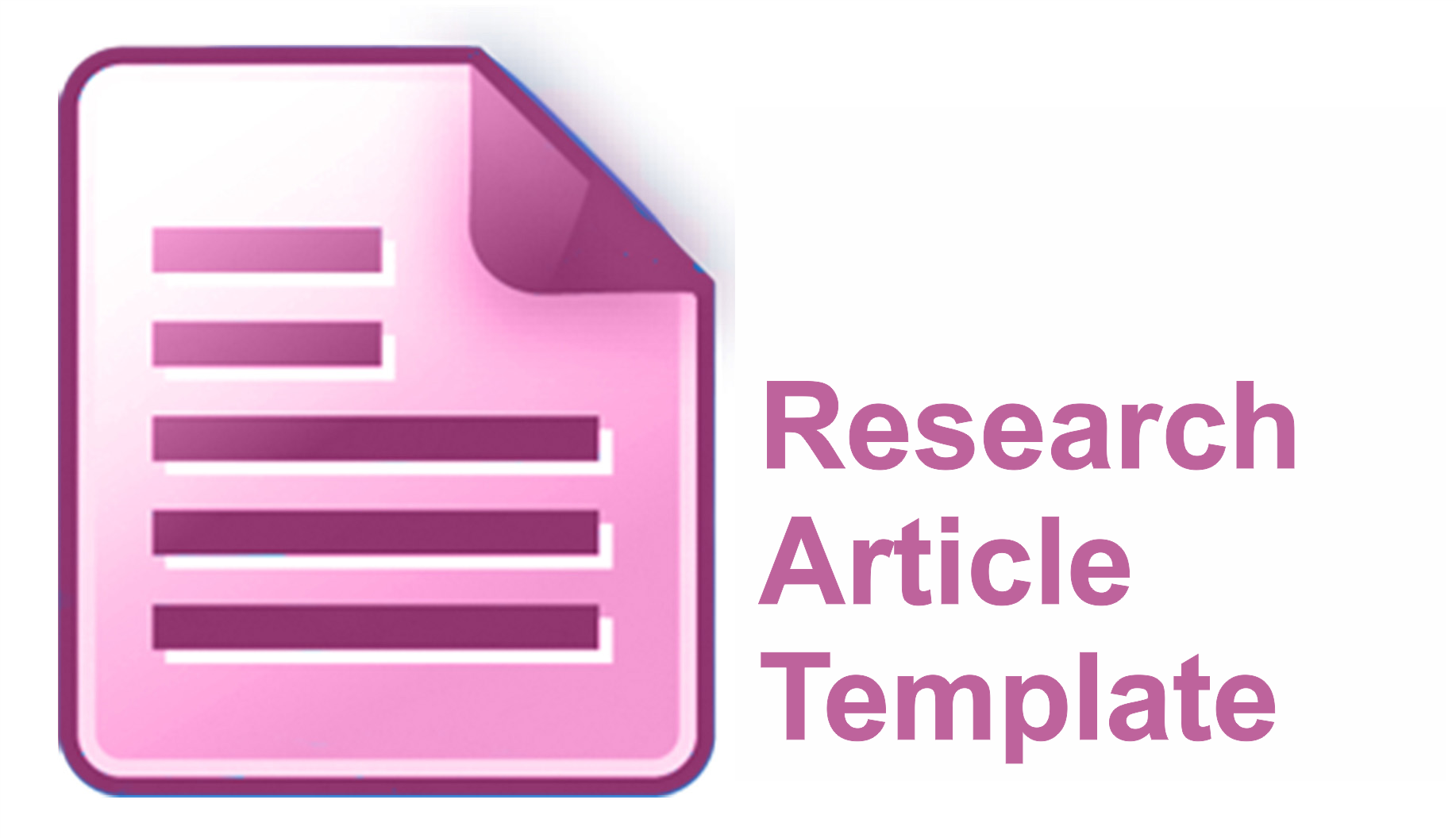
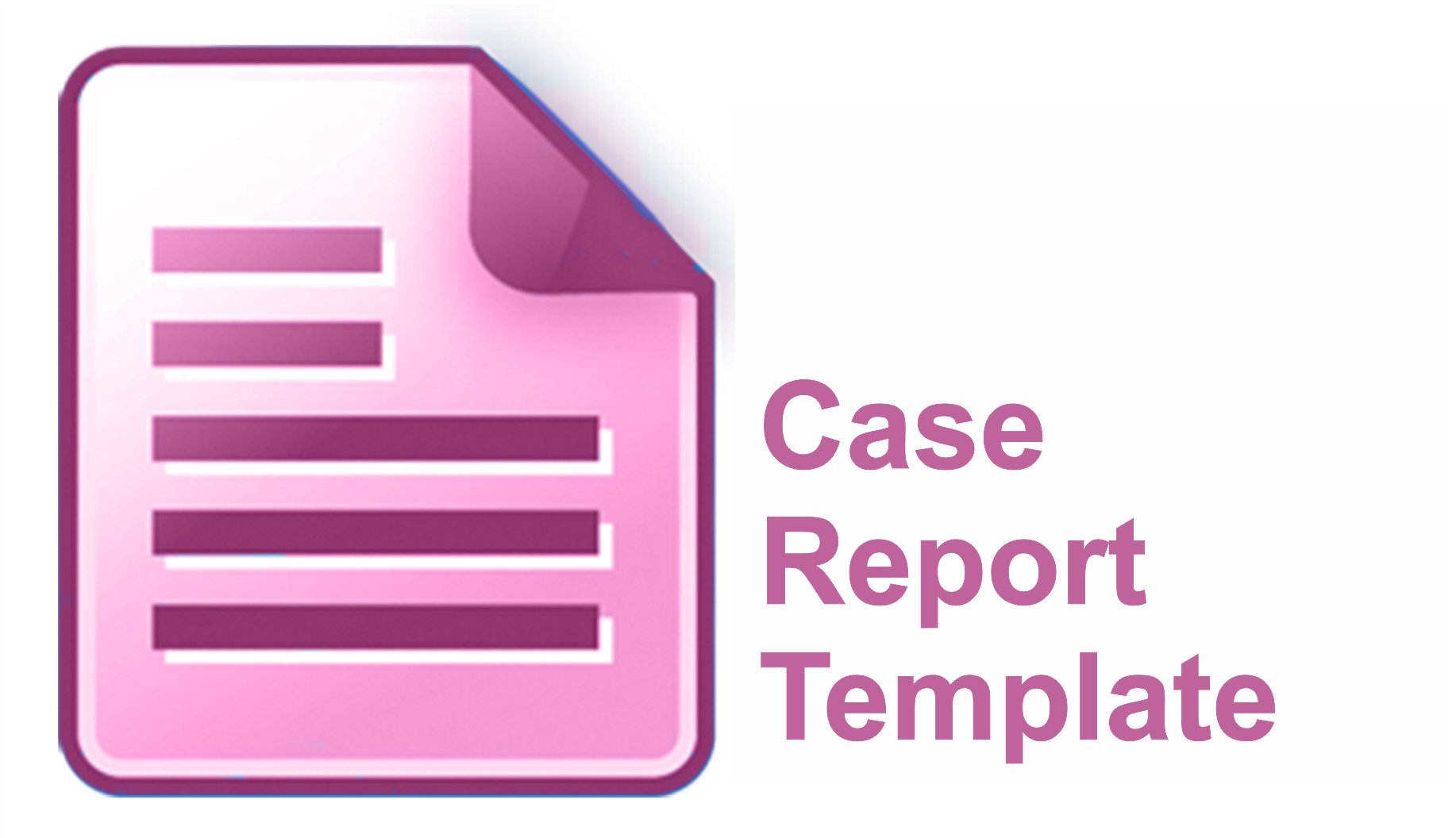
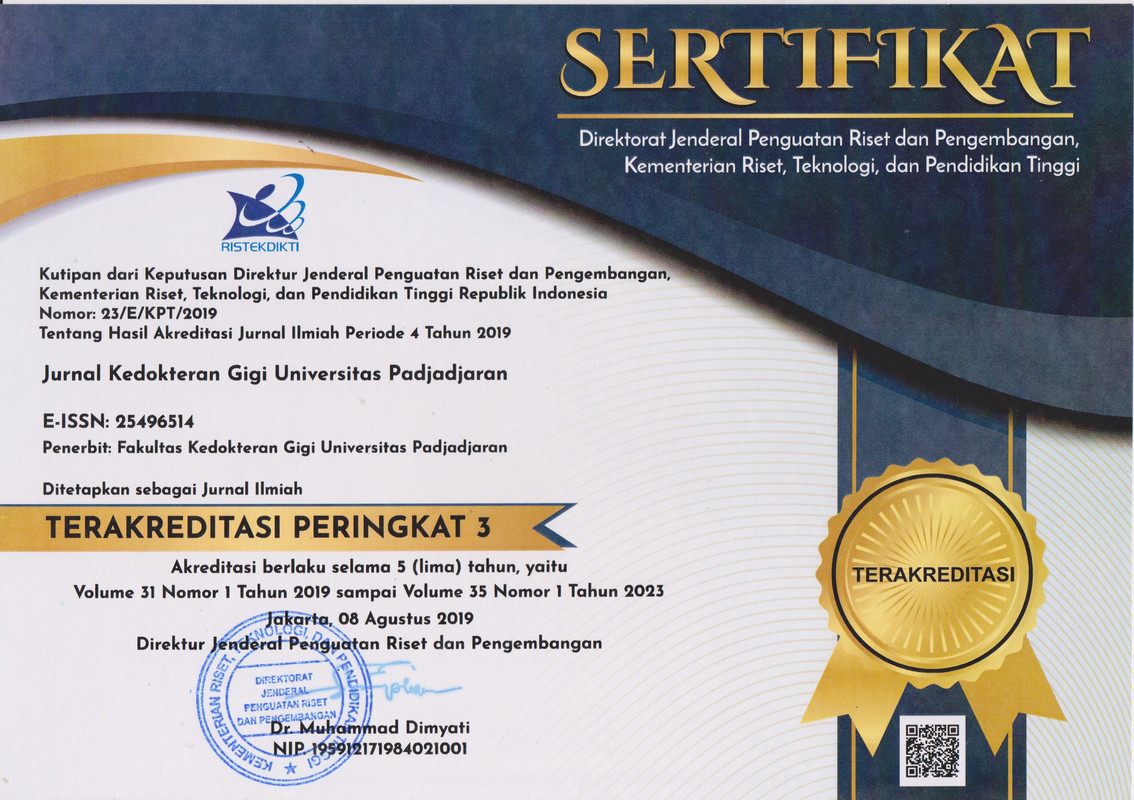
.png)

















